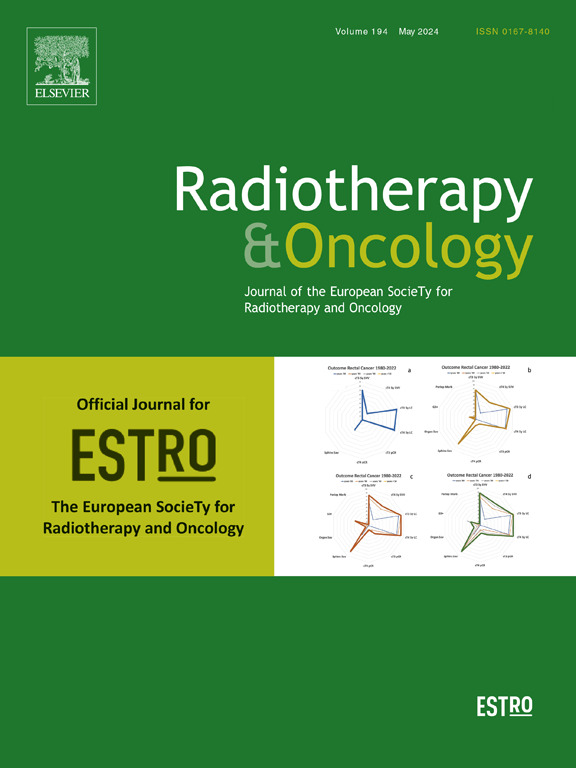The prognostic and predictive value of pre-treatment hematologic markers for oropharyngeal carcinoma stratified by HPV status and treated with definitive (chemo) radiation
IF 4.9
1区 医学
Q1 ONCOLOGY
引用次数: 0
Abstract
Background and purpose
The literature of hematological biomarker performance in oropharynx cancer is conflicted, likely due to heterogeneity of the cohorts studied, limiting clinical application. To resolve this, we analyze the predictive and prognostic power of the pre-treatment hematologic markers total lymphocyte count (TLC), total neutrophil count (TNC), total monocyte count (TMC), and neutrophil–lymphocyte ratio (NLR), for a large oropharynx cohort receiving definitive (chemo)radiotherapy ((C)RT).
Materials and methods
All OPC patients treated at a single academic center with definitive (C)RT between 2005–2018 were included. The actuarial rates of locoregional control (LRC) and distant control (DC) were calculated using competing risks methods, while overall survival (OS) was estimated using the Kaplan-Meier method. Multivariable analysis (MVA) was applied to assess the prognostic and predictive value of the TLC, TMC, TNC, and NLR, adjusted for known prognostic factors. A Bonferroni correction was applied with a significance threshold of p < 0.01, due to consideration of multiple markers.
Results
A total of 1,515 OPC patients were included (HPV-positive 1,151; HPV-negative 364). The median follow-up was 5.5 years, and 469 deaths were recorded. A significant interaction between the association of TLC and overall survival (OS) and the use of chemotherapy was identified for HPV-positive disease (p < 0.001). Hence, analysis was performed separately to determine the association of TLC with the outcome for the CRT and RT alone cohorts for HPV-positive OPC. On MVA, TLC was only prognostic for HPV-positive OPC when receiving CRT (OS adjusted HR (aHR) 0.51 (0.35–0.74), p < 0.001), with improved outcomes seen with higher TLC. TLC was also predictive for HPV-positive OPC, with a larger benefit to OS from the addition of concurrent cisplatin seen as TLC increased. On MVA, NLR, TNC, and TMC did not show a significant prognostic value in HPV-positive or HPV-negative OPC (p > 0.01 for all markers).
Conclusion
In this large and homogenous cohort of OPC patients receiving definitive (C)RT, TLC was found to be a prognostic and predictive biomarker for patients with HPV-positive OPC receiving CRT, but not RT alone nor in HPV-negative disease. No other assessed marker was prognostic. TLC may inform the stratification of patients for investigation of novel treatment strategies in HPV-positive OPC. Prospective validation of this finding is required.
求助全文
约1分钟内获得全文
求助全文
来源期刊

Radiotherapy and Oncology
医学-核医学
CiteScore
10.30
自引率
10.50%
发文量
2445
审稿时长
45 days
期刊介绍:
Radiotherapy and Oncology publishes papers describing original research as well as review articles. It covers areas of interest relating to radiation oncology. This includes: clinical radiotherapy, combined modality treatment, translational studies, epidemiological outcomes, imaging, dosimetry, and radiation therapy planning, experimental work in radiobiology, chemobiology, hyperthermia and tumour biology, as well as data science in radiation oncology and physics aspects relevant to oncology.Papers on more general aspects of interest to the radiation oncologist including chemotherapy, surgery and immunology are also published.
 求助内容:
求助内容: 应助结果提醒方式:
应助结果提醒方式:


